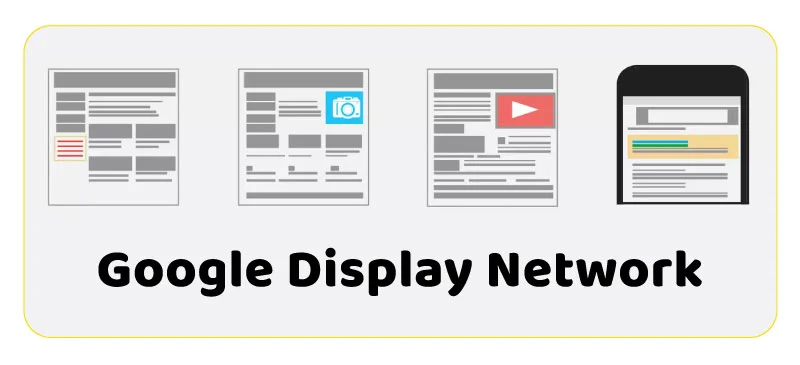Display advertising is currently one of the most popular promotion methods in the digital space. What started out as simple promotional digital banner ads in a select few websites in the 90s is now a very common advertising method that help millions of businesses around the world find prospects and introduce their brand to potential customers. While modern ad formats like native are getting more prominence every year and could take its place one day, display advertising is still the king, with 54% of total digital advertising spending in the United Stated in 2022 belonging to digital display ads.

Running display campaigns is incredibly easy right now thanks to highly automated and advanced advertising platforms like the Google Display Network which is the largest display advertising network in the world. If you’re a business owner looking to promote your brand on the GDN, you should know the platform works. In this article, we’re going to talk about the Google Display Network targeting strategy and how the system helps you show your ads to the right audience.
What is the Google Display Network?
Long gone are the days that you had to order banner ads from each individual website and waste a lot of time and energy (and money) on contacting website owners and discuss costs and scheduling with them. The whole digital advertising landscape is almost entirely automated right now, with self-serving advertising platforms providing access to a massive audience across different outlets with just a few clicks. The Google Display Network is a prime example of this.

This network consists of a whopping 2 million different websites, apps, and popular services like YouTube. By running campaigns in this network, you’ll reach a massive audience with different levels of buyer’s intent. All you need to do is provide Google with the required assets for banner ads and define where and when you want your ads to appear. The automatic system does the rest and makes sure your ads are displayed to users who will find it relevant and generate the best possible results. It also provides advertisers with tons of actionable data and performance analysis to help them optimize their display campaigns themselves even further.
Why Google Display Ads?
GDN is only a part of the whole Google Ads package. Another hugely popular advertising service of Google’s is paid search, which generates the highest chunk of revenue for company each year. Google dominates the global search engine market by a landslide with 92% market share. It’s pretty clear the Google search ads provide the highest online exposure to businesses and it’s proven that they’re capable of driving conversion and generate revenue quicker than other ad formats. But does this mean you should skip Google display ads and run search campaigns instead? Well not exactly.

Display ads work exceptionally great for prospecting and gradually introducing your brand to a big audience, whereas search ads are better for converting customers who have a very high level of buyer’s intent. It’s very important to have a marketing funnel and decide which funnel stage is your point of focus. A big plus for GDN is enabling you to target different stages, meaning you can market to people who have zero or very little awareness of your brand, or target prospects who’ve previously shown interest in you with remarketing display ads.
How does Google Display targeting work?
As mentioned earlier, the big advantage of modern display advertising platforms (and digital advertising in general) is accurate targeting of your intended audience. For any type of digital ads, it’s essential to know how their targeting system works in order to make good us of your budget and maximize performance. Google Display Ads targeting has two main categories: Host targeting and audience targeting (These are not their official names, but we prefer them this way since they’re easier to grasp).
Host targeting
The first category revolves around picking the places where you want your display ads to appear. Once you’ve defined your placements, Google will show your ads to all the users who visit them. Selecting hosts for your display ads can be done in three different ways:
- Placement targeting: The simplest and most direct way is to manually selecting each and every placement you want your ads to appear. A placement can be a website or a specific page on a site, a mobile app, video content, or even an individual ad unit. Google’s advertising suite has a Display Planner Tool that lets you check out the traffic and estimated costs for domains.

- Topic targeting: In this method, you select placements about a certain topic. These topics are pre-defined by Google and all you have to do is select them or exclude the ones that you find irrelevant. For example, if you own a sportswear company, you can select subtopics like Fitness and Google will put your ads on websites, pages, videos, or apps about that topic.
- Contextual targeting: In contextual marketing, you select placements that are relevant to what you’re promoting similar to topic targeting, but instead of choosing topics, you use keywords. Contextual targeting is more flexible than topic targeting and gives you more room to cover the placements that you potential customers might visit.
Audience targeting
As the name suggests, this targeting method category requires you to select the audience who will see your ads. Google will then display your ads in all the places that your selected audience will likely visit. Audience targeting has four different methods:
- In-market Segment targeting: Google constantly analyzes user interactions on its network like what they view, what they buy, and what they click on. The company then puts these users into In-market segments, which are people who are interested in very broad categories of products and services, like sports, fitness, finance, etc. Specific segments have their own sub-categories, each one containing millions of users. Adding layers of different filters like demographics, location and devices helps narrow down this massive audience and target users more accurately.
- Affinity Audience targeting: Google users with similar interests like video games and fashion are affinity audiences. The difference here with the In-market segment is that affinity audiences are determined by their general interests and behavior, whereas In-market is more tied to temporary behavior. Again these categories are very large and it’s crucial to narrow them down using more qualifiers and Google’s suggestions.

- Custom Affinity audiences: Audiences that Google thinks are likely to be interested in you are in this category. This likelihood is determined by the interactions they’ve had with specific keywords and URLs. You’re not targeting exact keywords here. In fact, Google shows your ads to people who have searched for your suggested keywords or websites that have a contextual connection to the keywords and the URL you’ve provided to Google.
- Demographic targeting: This targeting method is the most direct way of selecting of an audience for your campaigns. Instead of segmenting audiences based on their interests, demographic targeting lets you define the demographic characteristics of your intended audience. They could be gender, age, parental status, etc. Google lets you combine demographic targeting with other audience targeting methods to narrow down your targets even further.
Conclusion
Just like any other major digital advertising platform, the Google Display Network uses a highly automated system to help you create optimized ads and show them to your intended audience. While the system takes care of a lot of the manual work, you still need to choose how you’re targeting should be, so it’s essential to have a good understanding of targeting methods when creating your Google Display Ads strategy. Hopefully, this article covers everything you need to know for creating accurate audience segments and maximize your display campaigns.
FAQs
What are three methods of targeting in Google Display Network?
Interest-based targeting in the Google Display Network has three methods: Affinity Audiences, Custom Affinity Audiences, and In-market Audiences.
What kind of targeting should we use in our display campaign?
It heavily depends on the type of your business, your advertising strategy, your budget, and the stage of marketing funnel you want to focus on. It’s best to create multiple audience segments for your campaigns and exclude the placements that are irrelevant to your brand.
How do I optimize a Google Display Network campaign?
Make sure to create high-quality assets for your display ads and pick the right audiences according to your strategy and preferred audience. Use the performance analytics in order to optimize your campaign and get the best possible results. Split test different assets, targeting filters, ad copies, topics, and keywords to find out which ones resonate better with your audience.







 Facebook Ads Spy Tool
Facebook Ads Spy Tool TikTok Ads Spy Tool
TikTok Ads Spy Tool